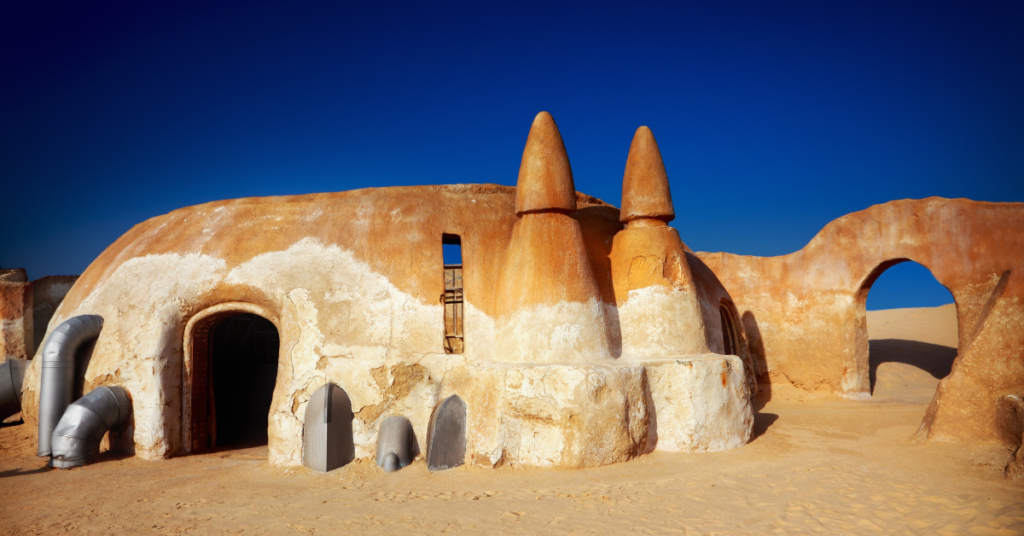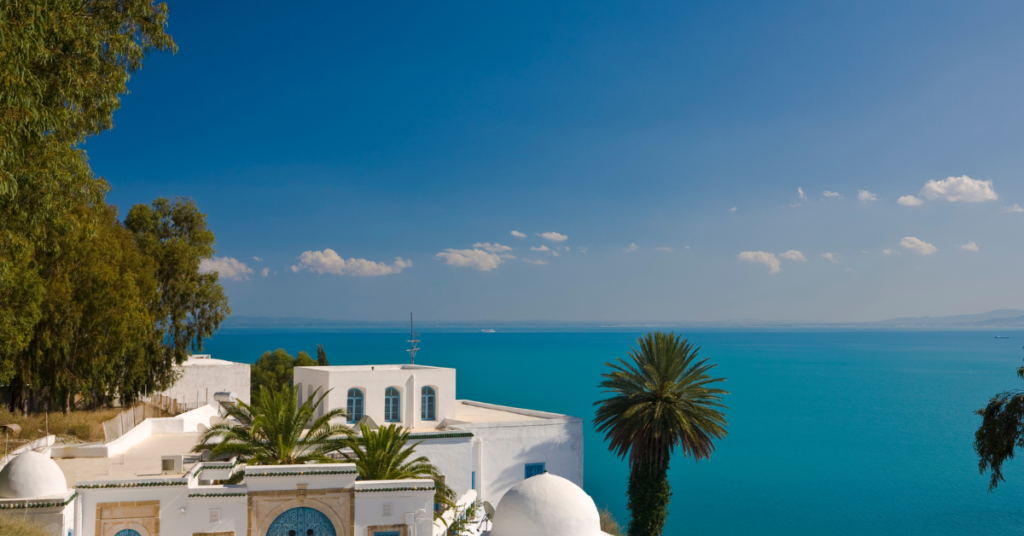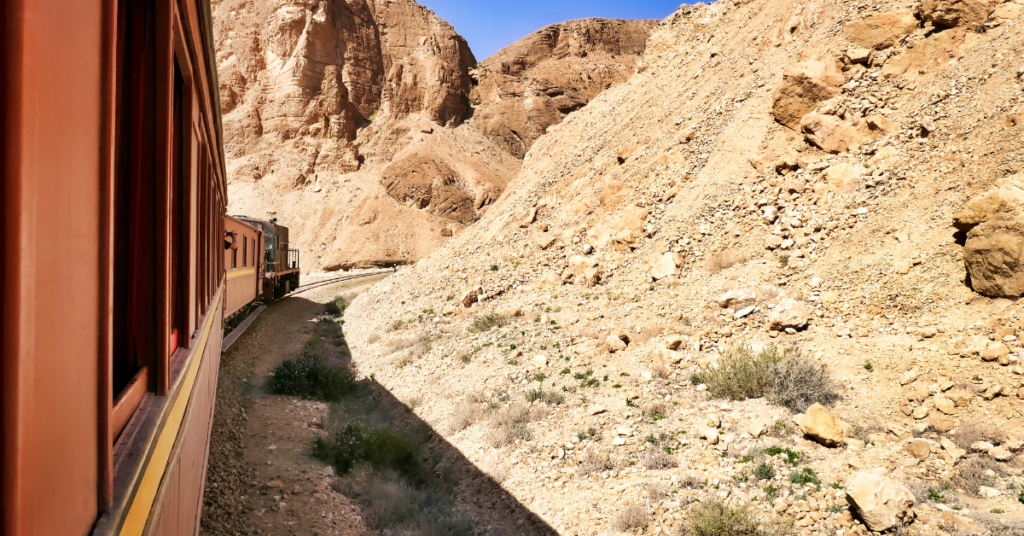Imagine meandering through the echoes of an empire that once stood tall, where gallant soldiers clashed in epic duels and ancient merchants traversed the vast oceans. Carthage, with its breathtaking coastlines and whispered tales, beckons with an allure that’s hard to resist. Are you ecstatic? Let’s go off on our tour and see Carthage’s marvels together!
Why You Should Visit Carthage?
Carthage is a must-visit destination for several compelling reasons. Firstly, its historical significance as an influential ancient civilization is captivating. Exploring the well-preserved archaeological sites allows you to immerse yourself in the rich history and unravel the story of this once-great civilization. From the Roman Theatre to the Antonine Baths, you’ll witness remarkable architectural marvels that showcase the ingenuity of the ancient world.
Secondly, Carthage’s stunning coastal location adds to its allure. Situated along the picturesque Tunisian coast, the city offers breathtaking views of the Mediterranean Sea. The serene ambiance and refreshing sea breeze provide a perfect backdrop for relaxation and rejuvenation. Additionally, nearby attractions like the enchanting village of Sidi Bou Said and the vibrant capital city of Tunis offer further exploration opportunities, enriching your overall experience.
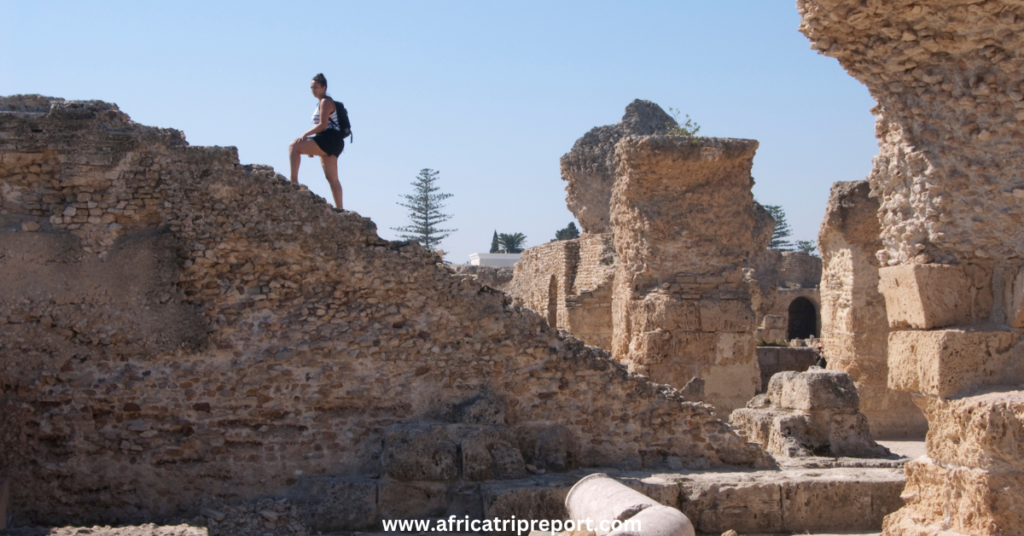
How To Get To Carthage
Between Tunis and Carthage, there are various ways to travel:
- By Train: Traveling by train from Tunis to Carthage is the simplest and most economical option. The suburban train line TGM (Tunis-Goulette-Marsa) runs from Tunis to a number of coastal cities, including Carthage. It takes around 20 minutes to go from Tunis to Carthage. To get to the Carthage Hannibal station, just board the TGM train at either the Tunis Marine or Tunis Ville stations. The Carthage archaeological sites are nearby and may be reached by a short walk or taxi ride from there.
- By Taxi: Taxis are really easy to find in Tunis; you can either call one on the street or go to a marked taxi stop. But please, negotiate the fare with the driver before getting in, or make sure the taxi meter is in use. Depending on traffic, a cab ride from Tunis to Carthage will take between 15 and 20 minutes.
Best Time To Visit
To visit Carthage, Tunisia, the best time to do it is spring (April to June) and fall (September to November). Due to the pleasant and sunny weather, these months are ideal for touring historical sites and participating in outdoor activities. In addition, there are fewer visitors now than there were during the busiest part of the summer.
Given the splendor of the in-bloom flowers and the pleasant temperatures of 15°C to 25°C (59°F to 77°F), springtime in Carthage is the perfect time to come. If you prefer autumn, you will have similar weather, albeit a bit hotter, which will be perfect for seeing the city’s attractions and taking leisurely strolls along the seashore.
It’s important to be aware that throughout the summer (June to August), Carthage may experience some intense heat, with frequent highs of 30°C (86°F). Expect larger crowds and warmer temps if you go at this time.

Best Attractions In Carthage
There are a number of must-see locations in Carthage that highlight the beautiful history and antiquity of this historic city. Some of the top destinations in Carthage are listed below:
Carthage Archaeological Site: Explore the vast archaeological site, which has a variety of old city ruins and buildings. The Roman Theater, Roman Villas, Byrsa Hill, and the Antonine Baths are some of the highlights. Consider life in the vibrant civilization of Carthage as you immerse yourself in history.
Tophet: This holy cemetery provides a window into the Carthaginians’ religious rituals. Discover the beliefs and customs of the ancients as you stroll amid their tombs. The Tophet offers a distinctive and a little enigmatic experience.
Byrsa Hill: Climb to the top of Byrsa Hill for panoramic views of Carthage and the surrounding area. From here, you can appreciate the city’s strategic location and enjoy breathtaking vistas of the Mediterranean Sea.
Carthage National Museum: Located outside the archaeological site, the Carthage National Museum is another excellent place to delve into Carthaginian history. It houses an extensive collection of artifacts, including sculptures, jewelry, and other treasures that provide further insights into the city’s past.
Antonin Baths: The largest Roman baths beyond Rome’s borders. Beyond its primary allure, the site houses a Punic cemetery, ancient residences, kilns, a chapel, and intricate mosaics. For a richer experience, consider hiring a multilingual guide, as the area is expansive. Entry is TD 5, or opt for a multi-site ticket. Photography? That’s an extra TD 1. But remember: avoid taking shots toward the presidential palace—it’s illegal and could lead to serious consequences, even if guards seem lax.
Water Cisterns: Once pivotal in water redistribution. These cisterns stood as the grand finale to an impressive aqueduct, believed to stretch around 90 km, sourcing water from the southern hills. Today, you can still marvel at the remnants of this aqueduct’s tail end. As a bonus, the location gifts visitors with a panoramic view of the city. The best part? It’s absolutely free to experience.
Read more: How Many Days Are Enough To Visit Tunisia?
Proposed Itinerary
Strolling around Carthage can be delightful. Yet, considering the vastness of the area and the scorching heat on certain days, it might be quite a task.
A suggested route for a fulfilling day: Begin by taking the TGM from Tunis to Carthage Hannibal. From there, ascend the hill until you reach the museum and cathedral’s entrance on the left. Once done, head downhill and take the first left. This will lead you to another street that runs parallel to the train tracks. Ascend this hill to find the Roman Amphitheatre on your right. Despite its name, it’s relatively modern.
Then, make your way downhill once more to visit the Roman Villas to your left. From there, cross the train line and the main road to immerse yourself in the baths’ history. Concluding your visit, turn left on the main road to reach Carthage Hannibal station. Hop on the TGM to Sidi Bou Said. From there, a brief taxi ride will get you to Port de Pleasance – a perfect spot for lunch and possibly a refreshing swim. A round-trip TGM ticket to Sidi Bou Said will set you back just slightly over TND1.

Tours
The easiest way to learn about Carthage is to go there from Tunis on a fun, half-day shared tour that combines seeing the ancient city’s ruins with enjoying a leisurely stroll around Sidi Bou Said’s charming streets. You will get the chance to view the fascinating remains of Carthage, a renowned Phoenician and Punic settlement, on this trip.
After visiting Carthage and learning everything there is to know about the history of the Carthaginians, the tour takes you to the charming town of Sidi Bou Said. With its distinctive blue and white architecture, it offers stunning views of the Mediterranean Sea. You may discover lovely souvenirs that remember your journey, so please take some time to look around.
The convenience of being picked up and dropped off directly from your Tunis hotel adds to the ease of the tour. Travel comfortably in an air-conditioned private vehicle, accompanied by an experienced guide who will share fascinating insights about Carthage and Sidi Bou Said.
Starting at about $60 per person, this shared half-day adventure gives an intimate experience of two breathtaking locations. Don’t pass up the chance to take an extraordinary trip that combines the beauties of Sidi Bou Said and Carthage.
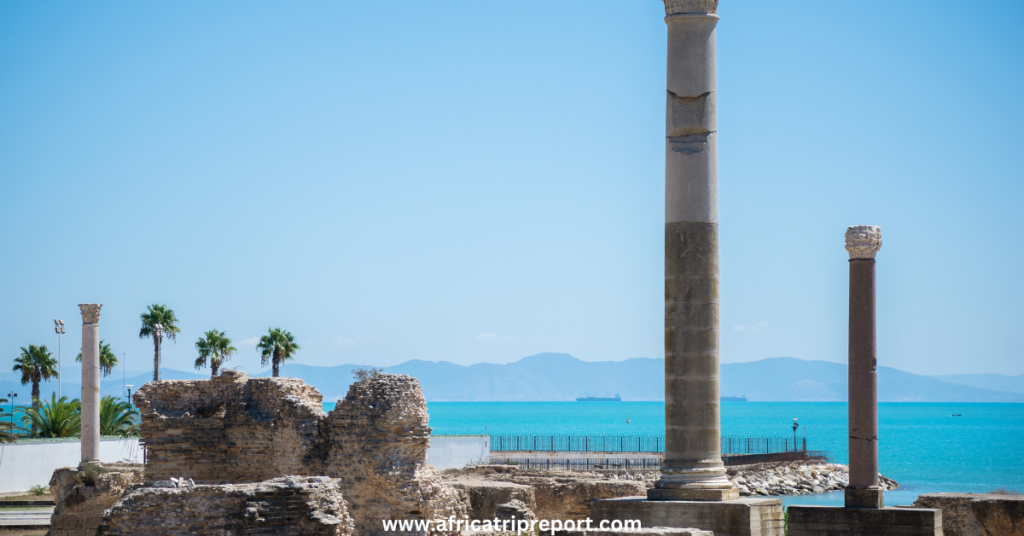
Where To Eat
When visiting Carthage, Tunisia, you’ll find a variety of dining options to satisfy your taste buds. Here are a few recommendations on where to eat in Carthage:
- Le Restó Villa Didon: Fantastic views of Carthage’s historic harbor are available from the restaurant. The cuisine is delicious. The service is also excellent. It is quite expensive, and the menu is what you could anticipate from a restaurant in Europe.
- Restaurant Le Punique: This is the place to go if you’re seeking for a restaurant with a relaxing atmosphere that’s perfect for an aperitif and a delicious dinner. The fish couscous is the most famous dish on the menu, so if you go, try to order some. Your appetite will be sated. This restaurant is an unknown gem that offers delicious meals in a tranquil setting, making it a must-see location.
- PunicArt: This restaurant has an amazing view. The food is not the best, but if you want to have a drink and enjoy the sunset this is the place.
Where To Sleep
When it comes to hotels in Carthage, one exceptional establishment stands out above the rest: Villa Didon. The hotel is well known for its stunning Byrsa Hill views. You get a great perspective on the surroundings via the breathtaking vistas.
The rooms at Villa Didon are very spacious, and it appears that each one has the same breathtaking views. The hotel is modest, with just 8 to 10 rooms, so you feel exclusive and serene, almost as if you’re the only guest. The soft beds are great for a good night’s sleep.
The hotel’s little pool is one of its features since it offers a cool break from the heat. The Villa Didon’s dining establishment, however, is the real gem. The restaurant provides unparalleled views that go perfectly with the fine cuisine, whether you’re having a romantic evening or a delectable lunch. Nothing compares to enjoying lunch while taking in the hotel’s gorgeous surroundings.
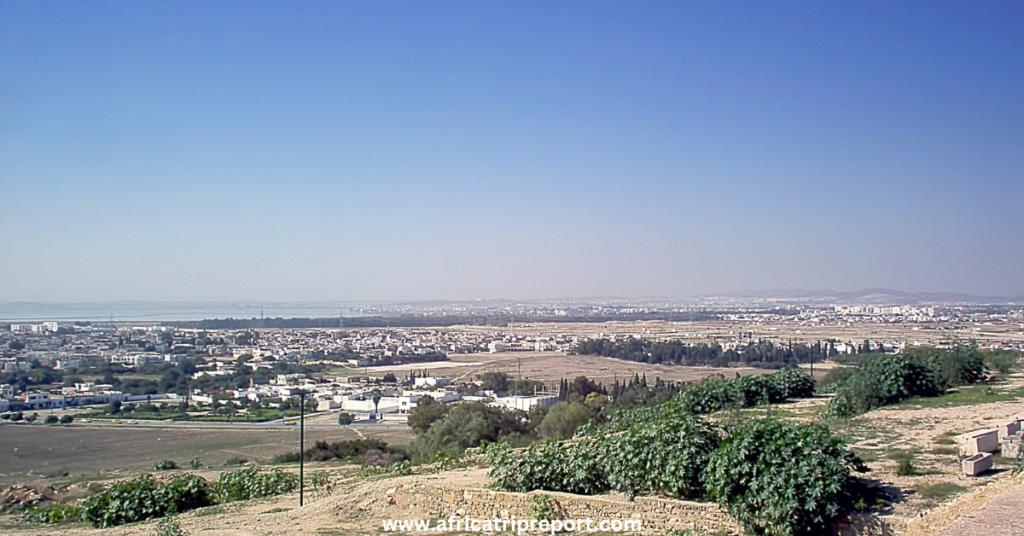
Is It Safe?
Despite the fact that Carthage is typically considered a safe tourist location, it’s crucial to exercise basic care. Reputable transportation should be used, reputable accommodation is recommended, local customs ought to be followed, and you should always be aware of your surroundings. To give yourself more peace of mind, think about getting travel insurance. While no place is completely risk-free, you may have a safe and pleasurable vacation to Carthage by following these recommendations and exercising common sense.
Read more: Is Tunisia Safe to Visit?
Money, Budget & Costs
The price of a trip to Carthage, Tunisia, might change based on a number of factors, including how long you want to stay, your lodging preferences, your eating preferences, and your personal spending habits. Here is a summary of typical prices you might anticipate:
- If you travel on a day tour, expect to spend about 60 USD on the tour.
- Be advised that different archaeological sites may have different admission costs if you are traveling on your own. For adults, the price per person is between $10 and $15.
- While Tunis, a nearby city, has a broad selection of hotels and guesthouses to meet different budgets, Carthage itself does not have a wide selection of lodging alternatives. Depending on the quality, location, and facilities of the hotel, Tunisian hotel rates often range from $50 to $150 per night.
- Depending on what you like to eat, the typical cost of food in Tunisia might change. A variety of excellent selections are available at reasonable costs in the local Tunisian cuisine. You should budget between $5 and $10 per person for a simple supper at a neighborhood eatery. Prices might be anything from $15 to $40 per person or more if you choose mid-range or fine dining.
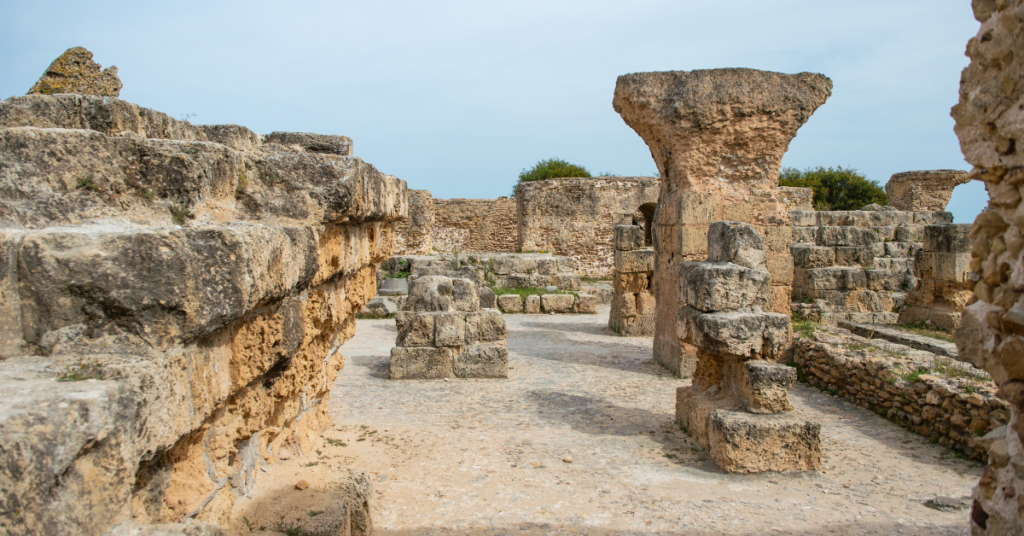
Useful Tips
Here are some useful tips to help you make the most of your trip to Carthage, Tunisia:
- Before traveling, research and plan your itinerary to ensure you don’t miss any important sites or attractions. Take note of opening hours, ticket prices, and any guided tours available.
- Walking is a must in Carthage, especially while seeing the archeological sites. Wearing comfy shoes will help you navigate the rough terrain and enjoy your stay more.
- Carthage is rich in historical significance, so it’s essential to respect the archaeological sites. Follow any posted rules and regulations, refrain from touching or climbing on ancient structures, and take care not to litter.
- Don’t forget to protect yourself from the sun. Wear sunscreen, a hat, and sunglasses to shield yourself from harmful UV rays. Consider bringing an umbrella or seeking shade during the hottest parts of the day.
- As a mostly Muslim nation, Tunisia is advised to respect local customs and culture by dressing modestly. It is recommended to cover your shoulders and knees while entering places of prayer or public areas.
- While many locals in Carthage may speak English or French, it’s helpful to learn a few basic Arabic phrases or carry a phrasebook to facilitate communication and show appreciation for the local language.
- Don’t miss the opportunity to savor Tunisian cuisine while in Carthage. Sample local specialties like couscous, brik, tajine, and fresh seafood. Explore restaurants and cafes that offer authentic Tunisian flavors for a culinary adventure.
Bottom Line
In the end, visiting Carthage is like traveling through time! You’ll be able to picture life in the past thanks to the historic structures that are all over the country. But the magnificent Mediterranean Sea is also one of the most amazing sights that will make Carthage a must-see place! Definitely, Carthage has a lot to offer, whether you’re interested in history, want to see stunning locations, or simply want to learn more about Tunisian culture. Pack your luggage and get ready for a fantastic holiday because Carthage is waiting to show you all of its riches!

I’m a total Africa enthusiast! I’ve been exploring this amazing continent for years and I can’t get enough of its diverse cultures, stunning landscapes, and incredible wildlife. From hiking through the savannahs to sampling local cuisine, I’m all about immersing myself in everything Africa has to offer. I’m constantly on the lookout for new and exciting experiences, and I love sharing my passion and knowledge with fellow travel lovers. If you’re looking for an adventure like no other, Africa is the place to be, and I’m here to help you make the most of it!


